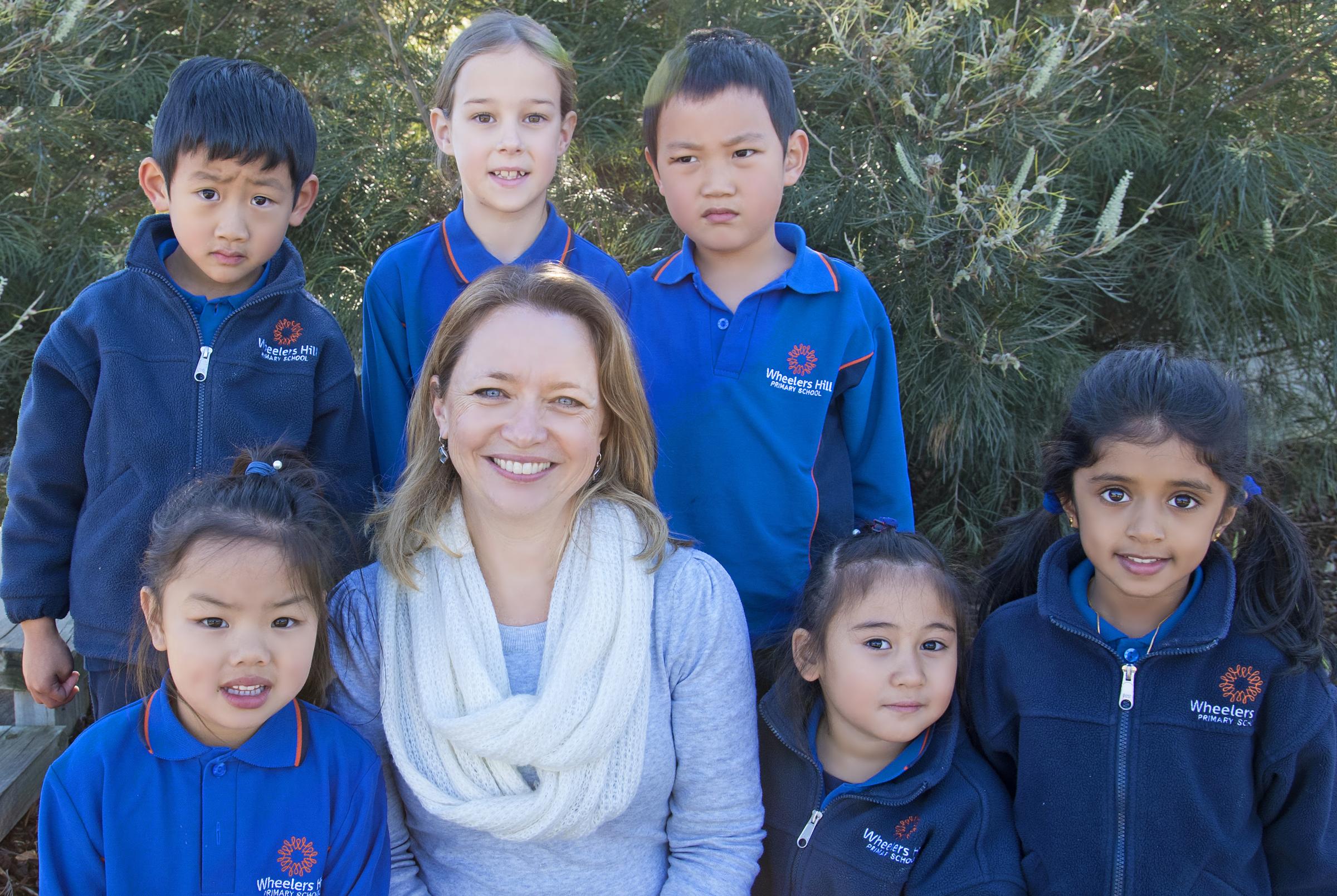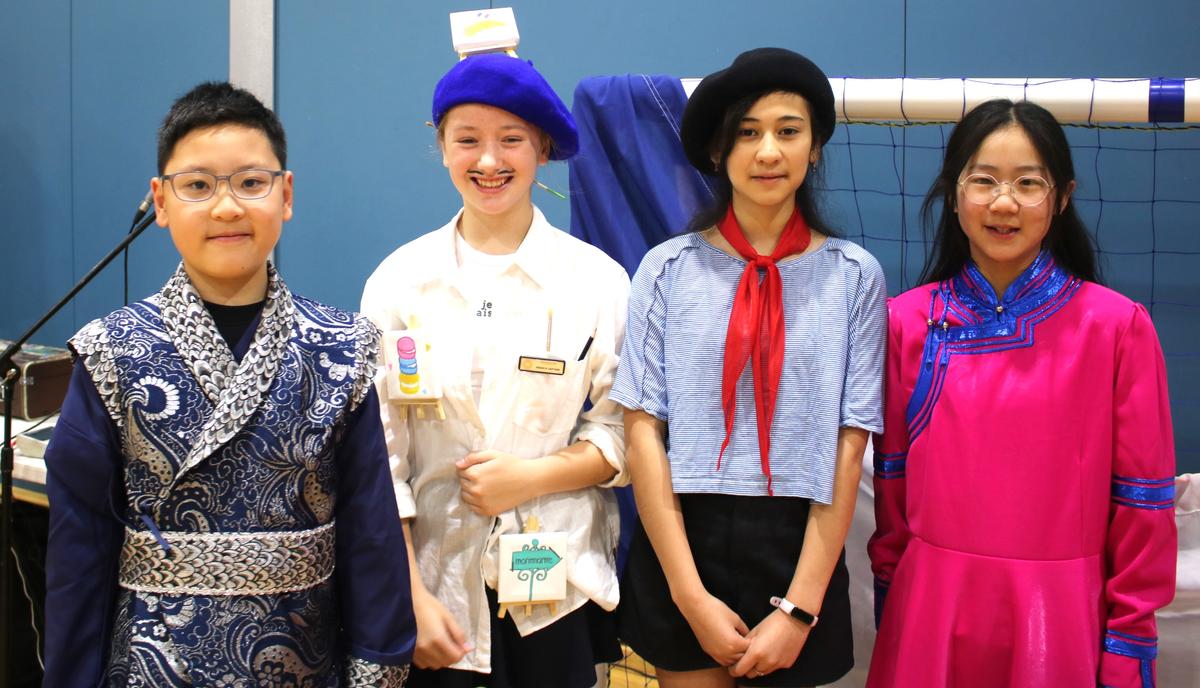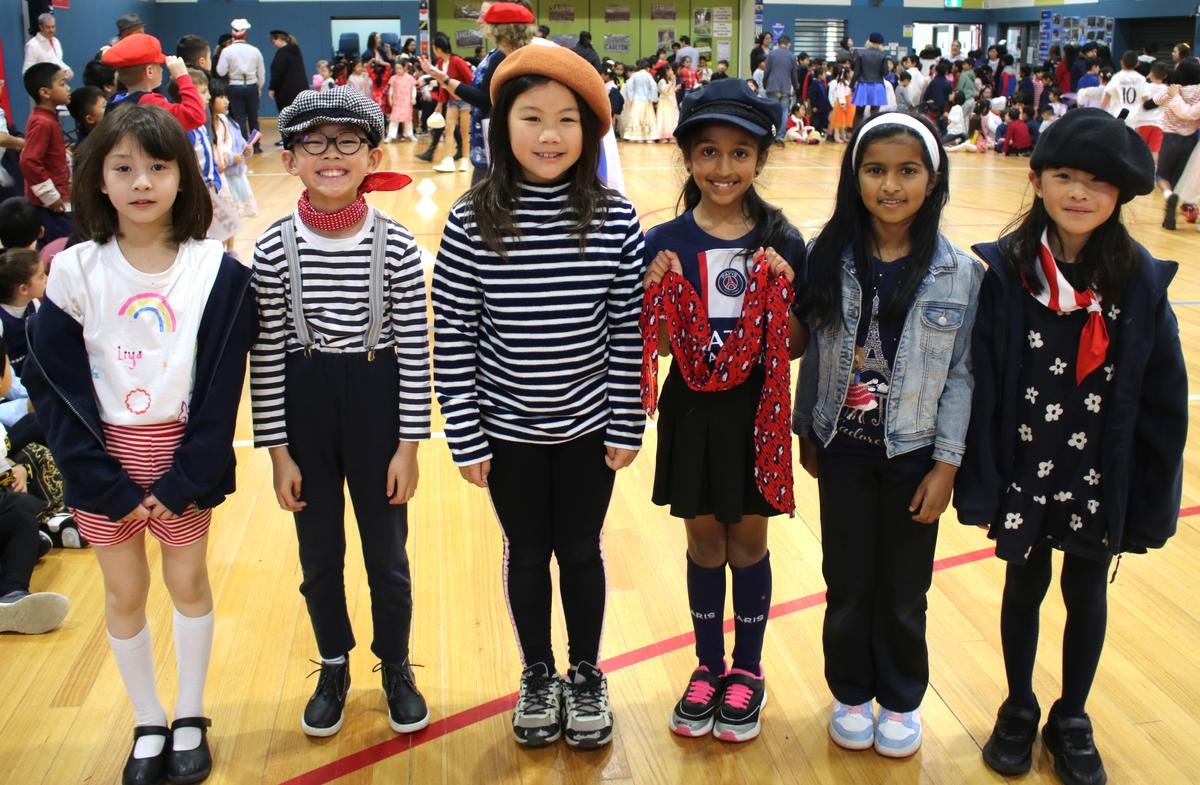Assistant Principal
Katrina Spicer - Wellbeing and Inclusion

Assistant Principal
Katrina Spicer - Wellbeing and Inclusion
Last Friday, 25th October, we held our first Walk to School Day since Covid.
Despite it being a cool and damp morning, over 140 students and their families met at local parks and reserves and walked to school. Parents were able to check their children in via a QR code, and everyone who registered was eligible for a prize. Congratulations to Darius in Year 2 who won a $30 gift voucher!
Walking to school is a fantastic way to encourage health and fitness, and helps children to meet the recommended 60 minutes of daily exercise. Thank you to Erin Bartleton for organising this event.
We will hold another Walk to School morning on Friday, 15th November. We encourage even more families to join us!


WHPS celebrated Languages Day on Wednesday, 23rd October. Our school is quite unique as we teach two Languages Other than English (LOTE) - Mandarin and French. All students have one session per week learning a language. Students in Prep experience a semester of each language, whilst student in years 1, 3 and 5 learn Mandarin all year round and students in years 2, 4 and 6 learn French.
Thank you to all of the staff and students who dressed in either French or Chinese costumes. Thank you to Ms Lu, Madame Lording and Océane, our French assistant, for organising the special Languages Day assembly and parade.
Thank you also to Madame Lording for organising the extremely popular Crepe Van. Très délicieux!












Katrina Spicer
Assistant Principal for Wellbeing and Inclusion
katrina.spicer@education.vic.gov.au


By Dr Justin Coulson
It’s no secret that motivation for schoolwork can dwindle as kids get older. Research consistently shows a decline in intrinsic motivation for learning as children progress through school. This happens for a variety of reasons – increased academic pressure, social distractions, hormonal shifts and a growing sense of autonomy, to name a few.
But the good news is that parents can play a key role in helping their children ‘hack’ their brain chemistry to reignite that spark and foster a love of learning.
The Happiness Quartet: Neurochemicals and Motivation
Our brains are intricate chemical factories, producing a cocktail of neurotransmitters that influence everything from our mood to our motivation. Understanding these chemicals and how they work can empower us to create environments that nurture a child’s natural curiosity and love of learning. Let’s explore four key players:
Dopamine: The Anticipation Engine
Dopamine is often called the ‘reward’ chemical, but it’s not just about the reward itself; it’s about the anticipation. Think of the thrill of looking forward to a special event, the excitement of chasing a goal, or the satisfaction of completing a challenging task.
Practical Tip: Help your child break down larger tasks into smaller, more manageable steps. Each completed step triggers a dopamine hit, fuelling motivation and a sense of accomplishment.
Serotonin: The Calm Conductor
Serotonin is the serenity superhero, promoting feelings of calm, contentment and wellbeing. It’s the antidote to stress and anxiety, which can sabotage learning and motivation.
Practical Tip: Encourage outdoor activities, even a short walk in the park. Sunlight, fresh air and physical activity area are all serotonin boosters. And remember the importance of serotonin for emotional regulation. Help your child develop strategies for managing stress and anxiety, such as deep breathing exercised or mindfulness practices.
Endorphins: The Body’s Natural Mood Booster
Endorphins are like nature’s own ‘feel-good’ chemicals, released in response to physical activity, laughter and even a warm hug. They act as natural painkillers, reducing stress and boosting mood.
Practical Tip: Encourage your child to engage in regular physical activity. Whether it’s playing tag in the park, dancing to their favourite music, or joining a sports team, movement is a powerful endorphin activator. (Pro-tip: the riskier the activity, the more endorphins and the more resilience. Anything where they can go fast, fall, or take some risk will be a winner.) And note that laughter is a great endorphin booster. Share jokes, watch funny movies, or engage in playful activities that spark laughter and joy. A good dose of giggles can do wonders for both mood and motivation.
Oxytocin: The Connection Catalyst
Oxytocin, often referred to as the ‘love hormone’, plays a crucial role in social bonding, trust and emotional connection. It’s released during positive interactions with loved ones, creating a sense of belonging and security.
Practical Tip: Strengthen Family Bonds. Prioritise quality time with your child, engaging in activities that foster connection and communication. Shared meals, game nights and bedtime stories are all opportunities to nurture those oxytocin-rich moments.
But remember that you can foster positive relationships in other contexts and that will help with learning, particularly when you encourage healthy friendships and social interactions with kids at school. Researchers have found the kids who feel a strong sense of ‘school belonging’ do better at school, and for many years afterwards.
Emotions are Information
Positive emotions enhance learning, and we love it when the kids feel these emotions because those neurotransmitters are buzzing around their brains. However, it’s crucial to acknowledge and validate all emotions, even the challenging ones.
When your child is struggling, remember that their emotions are information, not a crisis. It’s easy to get caught up in their emotional storms, but try to remain calm and centred. Help your child understand that all feelings are normal – even the messy ones like frustration, disappointment and anger. Support them in developing healthy ways to navigate these emotions. Remind them that emotions are like waves on the shore. They come and they go. Ride the wave and then watch it disappear back into the ocean. (In doing so, you’ll create oxytocin and serotonin!)
The Take Home Message
By understanding the power of brain chemistry, parents can create an environment that nurtures their child’s innate love of learning. It’s not about manipulating their brains, but about providing the support, encouragement and opportunities they need to thrive. Remember, a happy brain is a learning brain!
Our school subscription to Happy Families allows access to the Happy Families website to all members of our school community.
Families can access the Happy Families website at: https://schools.happyfamilies.com.au/login/whps
Password: happywhps